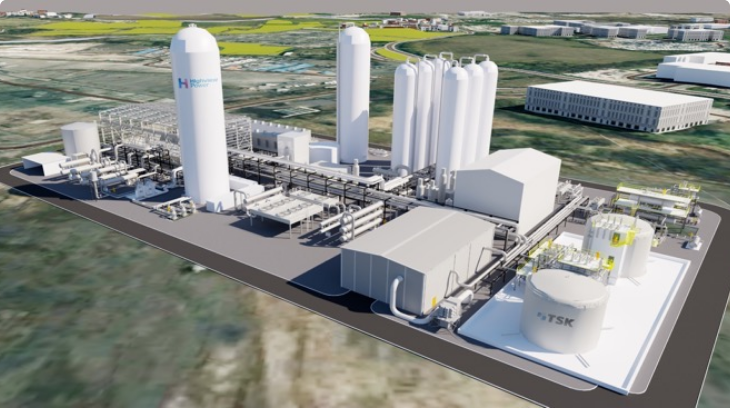Recently, the foundation of the heat exchanger for Unit 2 of Huaneng Jintan 2×350MW Salt Cavern Compressed Air Energy Storage Power Generation Project, contracted by Shandong Electric Power Construction No.1 Company and supervised by Shanghai Electric Power Engineering Consulting Co., Ltd., was successfully handed over and installed. This has created conditions for the subsequent positioning and installation of the heat exchanger, boosting the acceleration and efficiency of the project construction.

As a key piece of equipment in non-supplementary-fired compressed air energy storage power stations, the heat exchange efficiency of the heat exchanger directly affects the power generation efficiency of the unit. The heat exchanger area of Unit 2 in this project is mainly divided into the expansion-side heat exchanger area, the inter-stage heat exchanger area of compressors in rows A/B, and the comprehensive pipe gallery frame, etc. It is designed to install over 40 core heat exchange devices such as hairpin-type and shell-and-tube heat exchangers. The underground foundations here are dense, with numerous supporting piers, embedded parts, and pre-reserved holes, making construction highly difficult and requiring high technical standards.
To ensure construction quality and achieve milestone goals, the Huaneng Jintan Project Team of Shandong Electric Power Construction No.1 Company adhered to the quality philosophy of “Achieve excellence at one time, strive for perfection”. They carefully planned and scientifically organized the work, optimized the construction sequence, and adopted measures such as “excavation by zones from both ends to the middle”, layered pouring, automatic curing, and the signboard acceptance system. These efforts enabled the completion of foundation anti-corrosion, layered backfilling, foundation elevation above zero, pouring of upper short columns, installation of embedded parts, and other tasks, successfully meeting the milestone safely, with high quality and efficiency.
As a new type of long-duration energy storage power station, Huaneng Jintan 2×350MW Salt Cavern Compressed Air Energy Storage Power Generation Project is expected to undergo 330 charge-discharge cycles annually, with 8 hours of energy storage and 4 hours of power generation per cycle. During charging, the inter-stage heat exchangers on the compression side are used to recover a large amount of high-quality compression heat generated during air compression. During power generation (discharging), the stored compression heat is used to heat the compressed air released from the salt cavern through the expansion-side heat exchanger, which then enters the air turbine generator to generate electricity. The entire process requires no supplementary combustion of fossil fuels, enabling efficient resource utilization and zero carbon emissions, thus avoiding environmental pollution.
It is reported that this project is currently the world’s largest compressed air energy storage power station in terms of single-unit power, total capacity, and comprehensive efficiency. A single charge can store 2.8 million kWh of electricity, with an annual power generation of 924 million kWh. This is equivalent to saving 270,000 tons of standard coal and reducing carbon dioxide emissions by 520,000 tons. It can effectively enhance the power grid’s regulation capacity and new energy absorption capacity, promote the efficient utilization of renewable energy, provide energy storage support for the early realization of China’s “dual-carbon” goals, and serve the national energy security strategy.


